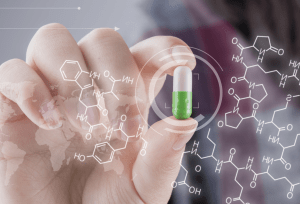High-quality translation is essential when launching pharmaceutical products in a new market, providing treatment in a patient’s native language, or exporting medical devices. According to the World Health Organization (WHO), multilingual communication bridges gaps and promotes understanding between people. It enables the WHO to more effectively guide public health practices, reach international audiences, and achieve better health outcomes worldwide. Whether it’s patient records, clinical trial data, or informed consent forms, the accuracy of these translations can directly impact patient care, regulatory compliance, and international collaboration. Let’s take a closer look at what medical document translation is and how to do it right.
What Is Medical Document Translation?
Medical document translation refers to the process of translating various medical documents from one language to another. This includes a wide range of documents:
- Patient Medical Records: Detailed histories of a patient’s medical background.
- Medical Reports: Summaries of medical findings and diagnoses.
- Informed Consent Forms: Documents that ensure patients understand the procedures and risks involved in medical treatments.
- Drug Labels and Packaging: Information about drug use and safety.
- Clinical Trial Data: Documentation of research results and trial protocols.
- Consultation Transcripts: Records of patient consultations with healthcare providers.
- Medical Device Documentation and User Manuals: Instructions and guidelines for medical devices.
- Prescription Labels: Directions for medication administration.
- Medical Research Papers: Academic articles and studies related to healthcare.
- Website and Online Documentation: Digital content for medical services and information.
5 Tips for Translating Medical Documents
Translating medical documents requires meticulous attention to detail, a deep understanding of medical terminology, and an awareness of cultural sensitivities. Here are five tips to ensure the accuracy and effectiveness of medical document translation:
1. Provide Accurate Source Text
The quality of the translation depends heavily on the accuracy of the source text. Make sure that the original document is clear, precise, and error-free. Ambiguity or inaccuracy in the source text can lead to significant misunderstandings in the translation. The source document must be thoroughly reviewed and proofread before translation to maintain the integrity and accuracy of the information.
2. Invest in Professional Medical Translation Services
Use professional translation services that specialize in medical translations. Certified medical translators with a background in healthcare and medical sciences are essential for accurately interpreting complex medical terminology and concepts. These professionals have the expertise to ensure that translations are accurate and contextually appropriate, improving the quality of communication between healthcare providers and patients.
3. Use Reliable Translation Tools and Resources
Incorporate advanced translation tools such as Computer-Assisted Translation (CAT) tools, translation memory, and terminology management systems. These tools help maintain terminology consistency, reduce errors, and increase efficiency. In addition, reference to authoritative medical dictionaries and glossaries can further ensure the correct use of medical terms and phrases.
4. Establish Rigorous Quality Control Processes
Establish comprehensive quality control processes that include multiple rounds of proofreading, editing, and review by medical experts. A thorough quality assurance protocol helps identify and correct errors, inconsistencies, and inaccuracies. Back translation, in which the translated text is translated back into the source language by another translator, can also be an effective method of verifying the accuracy and fidelity of the translation. Peer review and feedback from other medical translators can provide additional validation to ensure the highest level of accuracy in the translated documents.
5. Implement Top-Notch Data Protection Measures
Medical documents often contain sensitive patient information, making data protection a critical aspect of the translation process. Ensure that all translation activities comply with relevant data protection regulations, such as HIPAA in the United States or GDPR in Europe. Use secure file transfer methods, encrypted storage solutions, and strict access controls to protect confidential information throughout the translation process.
EC Innovations Can Help
At EC Innovations, we understand the complexities and critical importance of medical document translation. Our team of experienced medical translators is dedicated to providing accurate, reliable, and high-quality translations. With rigorous quality control processes and a deep understanding of medical terminology and industry standards, we ensure that your medical documents are translated with the utmost precision and care. Contact us today to get a free quote for your medical translation project!






